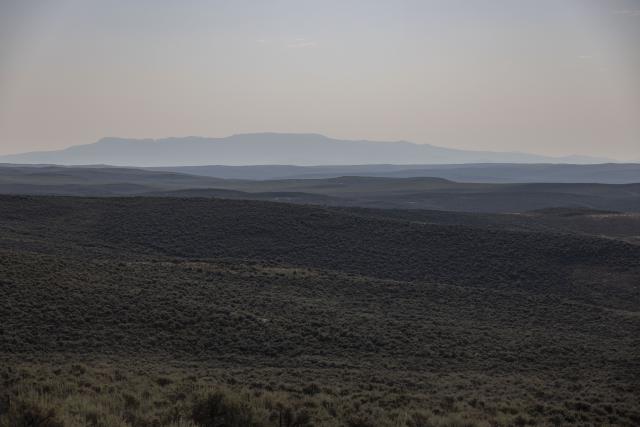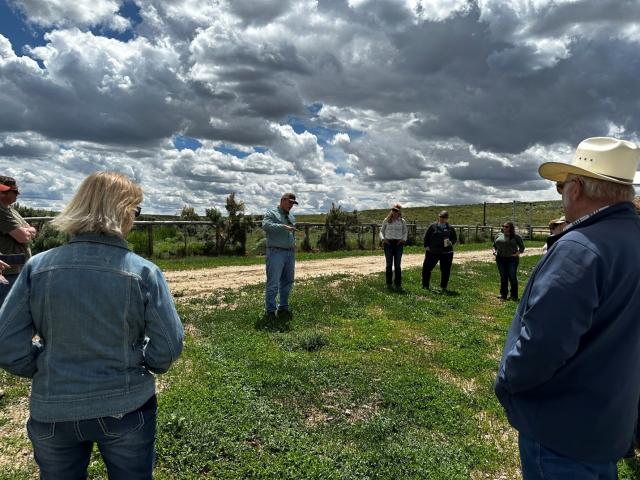Flexible grazing program capitalizes on the art and science of range management

In 2018, the Bureau of Land Management initiated a pilot program to explore approaches for authorizing and managing grazing use on public lands under its multiple-use mission.
Hunter Seim, the assistant field manager for the Little Snake Field Office in northwest Colorado, has been part of that effort as a range conservationist since the beginning, seeking to change grazing management from “the bureaucratic prescriptiveness that has creeped in over the decades that can restrict us” and instead managing toward identified resource conditions.
He saw the pilot program become policy within the BLM in 2024, which authorizes grazing permittees and lessees the flexibility to adjust their livestock grazing use to accommodate yearly fluctuations in forage production or to meet specific ecological or resource outcomes.
“Flexibility really entails the ‘art’ side of the science and art of range management, which is having the ability to read what the land is doing and running grazing systems that fit that year in that time,” Seim said. “We have a very long and rather traditional agriculture industry up here that thrives alongside some very sensitive resources … the way I approach permittees is they are partners and neighbors, and I have learned a tremendous amount of this part of northwest Colorado from the permittees I work with.”
Originally called Outcome Based Grazing Authorizations, the Little Snake Land & Livestock Company was selected to participate with an existing authorization encompassing three allotments within the LSFO. The first flexible grazing permit was issued in June of 2022 and is currently the only flexible grazing project in BLM Colorado.
“Flexible grazing requires a significant sense of ownership in the process by the permittee and the BLM in those shared objectives because that forms the basis of accountability,” Seim said. “This is going to allow us to demonstrate livestock grazing is compatible with sage grouse, so it is a positive thing, and we have the perfect operator to be participating in it.”
The flexible grazing strategy for this demonstration is to move livestock rapidly among pastures, with each pasture receiving long periods of no grazing use. Operators can adjust herd movement and size based on year-to-year changes in moisture and growing conditions. The grazing sequence of each pasture or allotment may be changed on an annual basis due to resource objectives, drought, or other unforeseen natural events.

Covering 17,000 acres of public land and over 25,550 acres of private and state lands, this project requires the operators to work closely with the field office and a range management consultant with extensive experience in northwest Colorado.
Using the short and long-term monitoring data collected by BLM, the consultant, and Colorado Parks and Wildlife, the operator is able to plan for the long term while understanding the effects of short-term changes on the land. By monitoring forage use and ecological indicators such as bare ground, plant vigor, soil erosion, plant distribution, and species composition, both the operator and BLM can assess the effectiveness of flexible grazing practices towards the project’s goals and objectives.
“The flexibility afforded by the program supports a more adaptive approach to land and livestock management, with rigorous monitoring data creating a feedback loop that informs management decisions,” said Todd Graham, managing partner with Ranch Advisory Partners, which provides rangeland health monitoring services on the allotments.
Additionally, livestock operations must still be within animal unit months and will have an allocated amount of forage, but rather than having grazing windows on certain landscapes, these metrics can inform how many or how few animals are grazing as well as change the duration for future use.
“It allows the range specialist and permittee to really look at what our resource objectives are and figure out the approach for how to get there,” Seim said.
The project area is almost entirely within habitat for greater sage-grouse, with much of it being designated as priority habitat. The goal of this project is to reduce bare ground, increase perennial vegetation coverage while decreasing invasive cheatgrass, and maintain sagebrush habitat for the Greater sage-grouse. Monitoring and evaluation of these indicators will serve as the benchmark for management success.
“The flexibility afforded by the program supports a more adaptive approach to land and livestock management, with rigorous monitoring data creating a feedback loop that informs management decisions,” said Graham.

The Colorado project is not the only one seeking to develop greater flexibility to respond to real-time ground conditions. There are nine other projects in six states that will cover a variety of range conditions and circumstances leaving the BLM and livestock operators better equipped to respond to environmental and operational changes.
Brigette Waltermire, public affairs specialist
